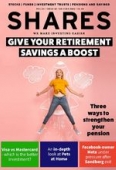Archived article
Please note that tax, investment, pension and ISA rules can change and the information and any views contained in this article may now be inaccurate.
Good economic news still struggles to drive up markets

On 3 June when many British investors would have been taking a break to toast the Queen’s Platinum Jubilee the US reported a strong set of employment numbers.
American firms added more jobs than expected in May at 390,000 compared with the anticipated 325,000 but this wasn’t a cause for celebration on the markets.
Instead, Wall Street took fright for one key reason – the figures were perceived as making it less likely the US Federal Reserve might hit the pause button on interest rate hikes.
Investors had previously warmed to this theme since the middle of May, and this had helped to arrest a long losing streak for US stocks.
If you dig a bit deeper into the latest jobs numbers you can see the inflationary pressure of higher wages remains, even if it is easing a touch, and the obvious conclusion is there is little scope for the Fed to be more relaxed towards rate increases.
The robust numbers told a different story from that portrayed by the corporate world, with an internal memo suggesting Tesla (TSLA:NASDAQ) could cut 10% of its workforce worldwide and other big employers suggesting they overdid it on hiring earlier this year.
Nonetheless it is undoubtedly the case that, over the last decade or more, we have frequently existed in a looking glass world. Bad news is taken as good news as it might encourage central banks to pursue policies which are more supportive to the markets and where the opposite is also true, signs of a strong economy might cause the likes of the Bank of England, the Federal Reserve and the European Central Bank to tighten the purse strings.
Senior market analyst at forex platform OANDA Jeffery Halley commented that the release ‘sparked yet another tail-chasing reversal across asset classes as US markets continue to desperately search for “peak-hiking” from the Fed and return to their buy-everything happy space, an illness caused by endless rounds of quantitative easing and ultra-low rates by the world’s central banks over the past 15 years, as they themselves tried to rewrite the laws of nature’.
This might be a severe reading of the situation but it’s not that healthy when investors are looking for news to be negative to give stocks and other higher risk assets a lift.
It also speaks to the fragile sentiment which currently exists in the market, with the recent recovery facing its biggest test in the near term when the Fed delivers its next decision on rates on 15 June.
A key sign we’re through the worst of the current crisis, and central banks have successfully seized back control of the narrative, would be a positive piece of economic news getting an unequivocal thumbs up from investors.
Important information:
These articles are provided by Shares magazine which is published by AJ Bell Media, a part of AJ Bell. Shares is not written by AJ Bell.
Shares is provided for your general information and use and is not a personal recommendation to invest. It is not intended to be relied upon by you in making or not making any investment decisions. The investments referred to in these articles will not be suitable for all investors. If in doubt please seek appropriate independent financial advice.
Investors acting on the information in these articles do so at their own risk and AJ Bell Media and its staff do not accept liability for losses suffered by investors as a result of their investment decisions.
Issue contents
Editor's View
Feature
Great Ideas
Investment Trusts
News
- Tesla and Microsoft give investors fresh reasons to fret
- Why boot brand Dr. Martens is walking tall by delivering growth
- Why the timing of Sandberg’s exit from Meta is terrible given severe challenges
- What the latest FTSE reshuffle means for the UK's leading shares
- Is it finally time to take a proper look at the Chinese market?

 magazine
magazine








